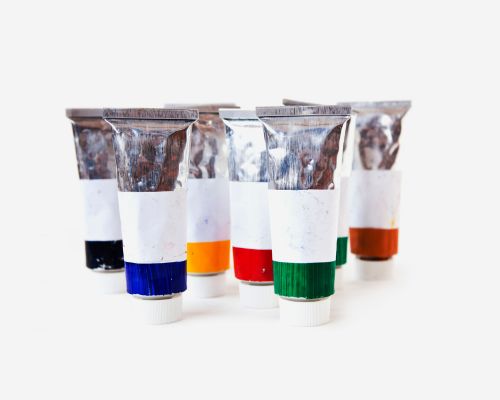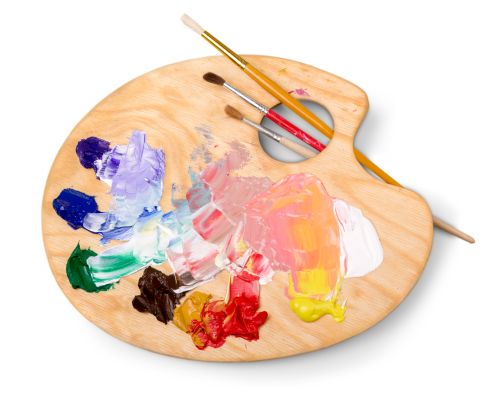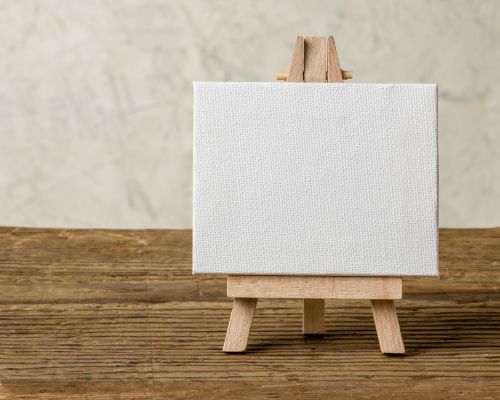Oil Painting For Beginners: Guide To Using Oil Paints
Why would anyone want to learn how to create an oil painting for beginners? Well, there are many reasons – I’ll tell you the essential ones:
Firstly, oil paintings are excellent artwork for newbies. And that’s because oil paints offer many possibilities for creative expression of ideas and visuals.
Secondly, going for an oil painting will allow you to play with effects and achieve new ones that might have seemed impossible to recreate before.
Lastly, oil paint is a medium that allows excellent use of texture and implementation of layering techniques. That alone will enrich your artwork and take it to the next level.
Today, we’ll discuss creating an oil painting on canvas for beginners. Let’s get to it, shall we?
Oil Painting For Beginners: Necessary Supplies
I doubt I have to be the one to tell you that working with high-quality materials will make all the difference once you finish your artwork. Furthermore, using the best oil paints will make the creative process simple and enjoyable.
While you don’t need to spend a fortune on oil paints when you’re starting, you should aim to get the best art supplies you can afford. Investing a bit extra in your oil paints will be worth it once you see the difference they make.
So, here are all the supplies you must have before you begin your first oil painting for beginners:
High-Quality Oil Paint

All newbie artists don’t have enough experience with mixing colors and shades. As a result, starting your oil painting with a limited palette of primary colors is enough at this point of your artistic journey.
But how do you choose a palette of primary colors? Before you purchase anything, I recommend doing research and browsing through all available brands that sell oil paints.
Most companies selling oil paints offer their products at different prices. Compare these prices and choose the best oil paints you can afford.
Paint Brushes
By all means, any serious artist must have brushes in different sizes. There is no one-fit-all solution when it comes down to your brushes!
Oil paints are not one of the easiest mediums to work with, so you’ll need high-quality brushes to help you move the point across the painting surface.
Ask any professional artist what the best brushes for oil paintings are, and most of them will tell you that’s Hog Bristle brushes.
Amazon sells many different Hog Bristle brushes at affordable prices. If you prefer to shop for brushes elsewhere, that’s your choice.
Surfaces
Do you have a surface in mind for your first oil painting for beginners? Will you create your oil artwork on canvas, wood, or even paper?
The good news is that all these surfaces will work for oil artwork. I can’t tell you which one to pick – that’s a question of preference.
I do all my paintings on canvas, but you don’t have to follow my example.
Palette

Are you aware that oil paints can easily eat into the material of a plastic palette? Well, if you didn’t know that before, you do now!
Subsequently, using a plastic palette will not cut it when creating oil paintings. You’ll need to get a glass or wooden palette before you begin your oil artwork.
Pro Tip:
Never start an oil painting on a surface that is not pre-primed. Priming will protect the materials you use to paint and provide consistent base.
Oil Painting For Beginners: Step-By-Step Process
1) Set Up An Art Studio
Most newbie artists have no choice but to create their paintings at home – I don’t see anything wrong with that.
If you plan to paint at home, take enough time to create a comfortable and efficient working space. It doesn’t have to be anything fancy – just make sure you have all the materials and tools you need at a hand’s reach.
Always remember to keep your materials clean – the same applies to your brushes.
2) Learn The Rules Of Painting With Oils
What rules should you be following once you’re ready to create your first oil painting for beginners? Is there something specific you must know about the creative process?
Yes, there is:
Working with oils requires layering paint on a surface. But are you aware there is an order in this process?
That order has a name – fat over lean rule. The fat-over-lean rule implies that layers with more oil have to go on top of layers with less since rich oil layers tend to dry slowly.
Can you imagine what will happen if a thin paint layer on the top is already dry but the rich one underneath is not? I bet you won’t enjoy looking at the end result.
3) Create A Smaller Oil Painting First

Any artist starting their first oil painting for beginners might feel the urge to go big or go home. Here is why you should try your best to resist that urge:
No matter how you want to look at it, starting something small is less overwhelming than throwing yourself into the deep waters of a large art project.
Working on smaller oil paintings at first will help you master your technique and deal with different elements.
Challenge your artistic abilities and test painting with different elements to decide which one suits you best. Once you get to know yourself better as an artist, creating oil artwork will become an easier and faster process.
4) Learn To Work With Oils, Chemicals, and Solvents
You can’t call yourself an artist if you don’t know that oil paint doesn’t mix with water. So, it’s necessary to get yourself a suitable oil mixer medium.
But what that medium should be? Well, you have a choice to make:
Some artists use paint thinners since they are stronger solvents. Assuming you might want to give them a try as well, you’ll need to wear gloves and protect yourself by wearing a mask.
Avoid over-applying a solvent on your painting because doing it will most likely result in visible bubbles on the surface.
A piece of advice:
If you decide to use solvent, you should do it in a large working space that offers more than enough ventilation. Keep your windows open to allow fresh air to circulate while you’re working.
5) Prepare Your Painting Surface
The next step to your first oil painting for beginners is to prepare the surface you’ll work on.
As mentioned earlier, you can create an oil painting on different surfaces, such as paper, wood, canvas, and even metal. Most canvases you can buy from a store come pre-primed, so you don’t have to waste time priming them.
But how do you prepare your painting surface? Well, the process is simple:
Make sure that all your materials are clean – there has to be no dust on any of them. Clean your brush and jar with water – I shouldn’t even have to mention that.
And what happens next? That depends on the type of painting you plan to create.
Some artists like to apply acrylic gesso to the surface, wait for the layer to dry, and then place the oil paints. However, you don’t have to do that if you don’t want to.
Tips And Ideas When Creating Oil Painting For Beginners
- Always read the information on the paint tube you buy: You may think that all oil paints are the same, but they are not. Reading the instructions on the paint tube will give you a clear idea about the best way to use it.
- Learn how to use oil paint colors: Oil paints will provide you with many possible color variations – yellow, red, and blue are not the only colors you can work with. There is a thing called the color wheel – learn as much as you can about it before you start painting.
- Master the color mixing process: Color mixing is not something anyone can explain with a couple of words. On the contrary – color mixing is a complicated process that takes a long time to master. Still, you have to start from somewhere!
Learn The Basic Oil Painting Techniques
Let’s get something straight:
If oil paints are your favorite medium, you’ll need to start learning the basic techniques to use it as soon as possible. Here are some of the most popular oil painting techniques:
- Impasto: Impasto entails applying a thick layer of paint on your surface – artists rely on that technique to achieve a 3D effect and texture.
- Alla Prima: Alla Prima is a technique mostly known as a wet-on-wet painting – it’s about placing a layer of paint before the one underneath has the chance to dry.
- Glazing: Glazing is a wonderful oil painting technique you should use each time you want to achieve depth in shades and colors.
Final Say
Quite frankly, we can talk about the best ways to create your first oil painting for beginners all day long – who has the time for that?
Newbie artists waste weeks and even months stopping themselves from starting their first artwork. While being insecure in your painting abilities is normal when you don’t have experience, you shouldn’t wait forever to start painting:
Practice makes perfect – we all know that’s true in all areas of life, including painting.
So, the only way to improve your abilities when working with oil paints is to start using them and go from there!
What questions do you have on today’s topic? Is there something you don’t understand about the creative process of using oil paints?
Ask me anything you want in the comments section below. I’ll answer all your questions as soon as possible!
Related Content You Might Like: